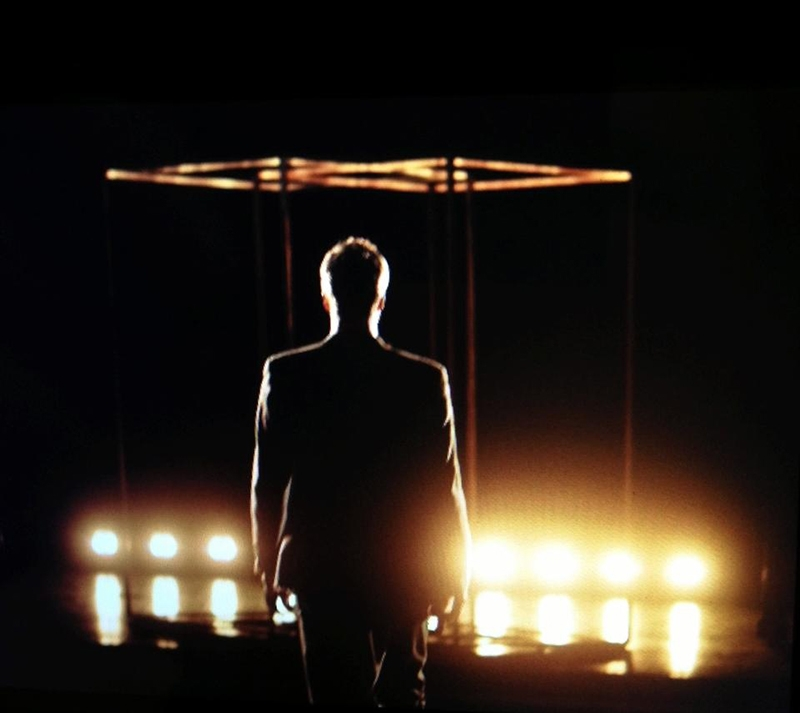
Let The Dance Begin: NOW Dance Company Performs The Wedding
Art
On Friday and Saturday, July 26 and 27, NOW Dance Company officially launched its career with a performance of The Wedding, held in the Salt Lake Masonic Temple ballroom. NOW was formed by Charlotte Boye-Christensen in collaboration with her partner/husband Nathan Webster. Boye-Christensen recently departed from the Ririe-Woodbury Dance Company, after serving for several years as artistic director.
Having earned the freedom and authority to pursue her artistic goals with almost complete independence, it is perhaps odd to see that Boye-Christensen’s first move has been to commit herself to a declaredly collaborative path. What the choice reveals, however, is the crucial difference between executive decisions (made by boards and committees) and creative experiments (made through collateral collaboration). It is in this latter modality, that of organizing and mediating rather than dictating, coaching rather that controlling, that Boye-Christensen appears intent on adopting in an effort to redefine dance in Salt Lake City and the larger artistic world.
The determination to collaborate has resulted in a Wedding composed of numerous precarious and provisional balances—aesthetic, technical, architectural and professional. The most obvious of these experimental combinations or interventions is the staging of the event in the Masonic Temple. Not only does it set contemporary performance and installation (seemingly Webster’s contribution) within period architecture, but it also takes distinct advantage of the space’s steeply tiered seating.
Rather than setting audience and performers into direct confrontation, a hallmark of Boye-Christensen’s previous work with mirrors, in The Wedding, she places the larger part of the audience well above stage level. This breaks the convention of the fourth wall, the imaginary plane or screen dividing dancers and audience and making attending dance akin to attending a movie. This shift of perspective converts the stage into a kind of athletic playing surface, complete which boundary and key markings.
Audience members, in this new arrangement, become spectators of a very different sort. The arrangement of space invites viewers to make investments in the action which are less concerned with maintaining abstract and disinterested mental states than permitting the uninhibited enjoyment of emotional intensities and bodily enthusiasms. Meanwhile, the dance itself appears more athletic and competitive. Movements within individual pieces seem less like necessary conclusions reached through traditional choreography than possibilities encouraged and obtained from a coach’s playbook.
If not an outright hero (to his credit, one seeks a less remote term), lead dancer Jo Blake has certainly become a familiar, indeed beloved, personality among Salt Lake dance fans. Blake offers a highly engaging portrayal of the groom, who vies for the attentions of contending partners. Boye-Christensen positions Blake over and against Katherine Lawrence-Orlowski, from Salt Lake’s Ballet West, and Yumelia Garcia from rival city New York’s Joffrey Ballet. Throughout The Wedding, the minimal drama of ritual and initiation remains more evocative than directly descriptive, and seems deliberately to function as a mere narrative motif, an occasion for formal experimentation.
The introduction of modern ballet into the space of contemporary dance was another of the evening’s key juxtapositions. While arguably less free in its expressivity, the crisp geometry of ballet sets the churn and flow of modern dance choreography into relief against a more cartographic form of dance, the bodies of the ballerinas marking out figures in precise sweeps of the compass. Other performers in the show included familiar “lay” (i.e., non-dancer) members of the Salt Lake community. This breaking down of professional barriers allows the groomsmen to take an auxiliary role not unlike that of athletic referees, hovering about and containing the action while remaining outside and avoiding any direct interference in it.
Some might contend that such a radical reorientation, indeed popularization, of dance degrades the seriousness of the art. However, it seems that such a shift rather fosters the idea of dance company as team, a team which the audience not only appreciates but for which it lustily roots. The Wedding encourages the Salt Lake dance audience unapologetically to affirm that it loves not just the sport of dance, or any specific game or outcome, but also the players themselves, their players.
The applause, both spontaneous and uninhibited, at the performance’s end had the feel of veritable cheering, and it suggested that Boye-Christensen’s great success has been to make contemporary dance truly site-specific and local, and key dancers hometown favorites. It is our Salt Lake City, The Wedding seems to announce, and we are all in it together.
